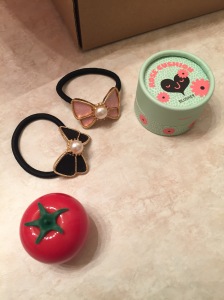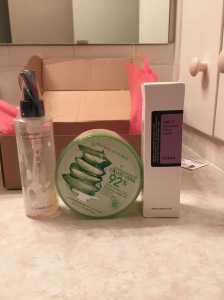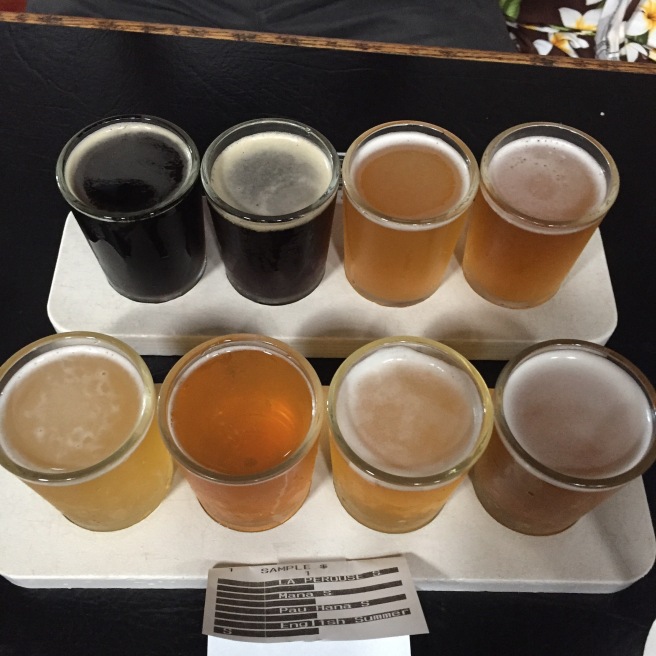What is this thing that happens when a person gets or does something great, and the people around them decide to be hateful about it? I’ve seen it when someone loses weight (“You’re *too* skinny now, you look sick”), when someone buys a house (“You’re stuck up and think you’re better than me”), even when someone gets in a serious relationship (“You’ve *changed* and you spend too much time with them”).
Why can’t we be happy for each other, Fledglings? I see this more among women than men, so I think it bears asking. Why can we not be excited when people achieve good things for themselves? I see that burning resentment on people’s faces, and I definitely read it in Facebook comments, and guys, it’s a problem.
I have some theories here, but please bear in mind that none of these are excuses for rage-quitting a friendship because the other person became successful at something. They’re more like jumping off points so that we can collectively ponder how we can stop shitting on our friends’ accomplishments like jealous, bitter middle-schoolers.
The first theory that comes to mind is that our friends’ successes throw our own failures and insecurities into sharp relief. Wedding season has been a hellish one for me in years past; seeing my friends get the happiness and love they so richly deserved came with a twinge of self-reproach, because I wanted that too and couldn’t figure out why I didn’t have it. That hurts. It’s a deep, crushing, soul-level hurt that took years to get past. I was blaming myself for not being in a relationship that was going anywhere, and in hindsight, I should have been more gentle with myself. I met my fiancé at the exact perfect time in my life – but if you’d have told me that five years ago, I’d have told you to stuff it. My current misery blocked out any hope of future contentment, so all I could see as my friends walked down the aisle was that they were happier, farther along in life, and more ‘together’ than I was.
I can’t tell you why that feeling of being a giant screwup in the romance department didn’t coalesce into a bunch of sneering resentment toward my lovelorn friends – hell, maybe it did for a while and I didn’t notice – but I’ve maintained all my friendships that were worth maintaining, so I’m thankful I didn’t sabotage myself too badly.
The thing I’ve taken away from that dark time, and subsequent (substantial) improvement, is that it was never my friends’ intention to hurt me by being so obviously happy in front of me. For one, they’re not responsible for my happiness. For two, expecting them to pass on love or success to keep me from feeling crappy about myself, is not an act of friendship. That’s an act of selfishness, expecting someone to hold off on succeeding until you’re ready to do so yourself. I wouldn’t be friends with someone like that, and I sincerely hope (maybe one day I’ll be brave enough to ask) that I wasn’t That Guy in my deeper points of ‘why me.’ That would be pretty embarrassing in hindsight.
Don’t invent a villain just so you have something tangible to be angry at.
Listen, Fledglings, if you’re feeling that nasty resentment that’s telling you how awful you are because you have to stand by and watch your friends be happy while you struggle, it is okay to take a step back. Better to put some distance and be with your thoughts, than to lash out at someone and wreck a friendship because they’re happier than you. That’s not their fault. Don’t invent a villain just so you have something tangible to be angry at.
Here’s another thought I’m having about this issue: do we feel like we’re in competition with our friends? Because my therapist would say that’s unhealthy. Are we thinking that our friend has ‘won’ and therefore we’ve ‘lost’ when they close on their gorgeous house in the ‘burbs?
Our friends don’t take anything from us when they succeed – unless you’re that other guy who helped found Facebook, I guess – so why do we feel that sense of loss when our friends embark on something new and great for them?
Maybe it’s because those big milestones often come with a lot of change, which any business manager will tell you is a hard thing for humans to grapple with. When I got engaged, I chose to move four hours away from nearly all my friends, and it’s definitely shaken my friendship tree and shown me what fruit needed to fall. But a friendship is like a business, Fledglings – if it’s too flimsy to handle change, it’s probably not supposed to exist. That’s harsh, but I’m sticking to it.
I think it’s human nature to worry what kind of changes our friendships will go through when one party makes some huge change, like having kids or starting a new career. Obviously, they’re going to live differently after this, so how do we friends fit in? Are we even a part of this new life they’ve gotten, that seems to make them so happy? Tell me that wouldn’t keep anybody up at night.
Like Billy Joel says, it’s a matter of trust. Don’t assume your friend intends to leave you behind – that’s feeding that fear and telling it that it’s real again, like when we talked about packing. Don’t do that thing, you’ll go all Don Quixote over it, chasing windmills thinking they’re Giants. There’s no need for that, when you could just ask your friend for reassurance that you’ll still be friends through all this new Life Stuff. Yeah, you have to be vulnerable to do that, but aren’t we all vulnerable, like, all the time? You asking your friend what this means is just you introducing that vulnerability and acknowledging its presence. Be brave, I know you can do it. Isn’t it better to know where you stand, even if the answer isn’t the one you’d prefer? Rejection fucking hurts, not even playing. But realizing ages later that you were more committed than they were, hurts a lot more. Odds are, your friend will have every intention of still being your friend (maybe with different schedules or conversation topics), but if they don’t, you will not physically die from it. You will move on from that weak friendship and find strong ones. And that’s you becoming successful.
Let’s be kinder to ourselves, Fledglings. We’re not competing against our friends. They’re not achieving things to spite us or to hold it over our heads (and if they are, why are they your friends?). Strive to own your own life and your own happiness, no matter where you’re at right now. That’s the best way to make sure other people’s wins are cause for celebration.









